eCommerce Email Marketing Statistics in 2024
Email marketing remains as an essential component of digital marketing strategies with an expected growth to 17.9 billion U.S. dollars by 2027.1 Although there may be some challenges to email marketing performance posed by privacy measures and consumer habits, eCommerce email marketing statistics would reveal that email marketing campaigns are a critical component of a successful online business strategy.
The goal of email marketing processes is to maximize the return on investment of marketing emails and to ensure that email marketing remains an effective tool for eCommerce businesses to:
- build customer loyalty,
- enhance customer retention,
- and drive sales.
This guide on eCommerce email marketing statistics includes current trends and recent statistics in eCommerce email marketing with insights on future trends.
What are the recent eCommerce email marketing statistics?
Email marketing holds a significant place for online retailers. According to a 2023 report, 6 out of 10 online retailers choose email, search and content marketing as their digital marketing strategy.2
Moreover, email has the highest budget allocation for online retail marketing with 44%.3
Online retailers also state that email is their most effective marketing strategy with 61%.4
Leveraging insights on eCommerce email marketing statistics can empower eCommerce businesses to make data-driven decisions that can improve the effectiveness of their marketing efforts which would lead to sustained growth and success in a competitive digital marketplace.
Here are some of the most valuable insights from eCommerce email marketing statistics:
Return of investment (ROI) rates
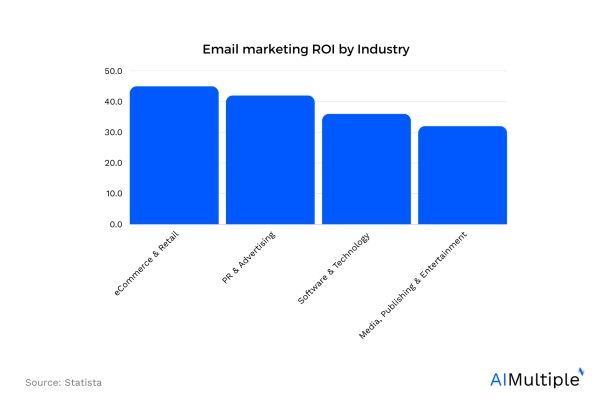
Figure 1: Email marketing ROI by industry.5
Among PR & advertising, software & technology, media & publishing, events, sports, and entertainment industries, eCommerce and retail hold the highest ROI rate with $45 for each dollar spent.6
Personalized and automated email marketing statistics
Personalization and automation are important components of eCommerce purchasing experience. According to a recent study on conversion rates of U.S. eCommerce sites, customizing the shopping experience for users led to a higher percentage of completed purchases.7
Another survey revealed that 32% of the participants were integrating artificial intelligence (AI) with marketing automation for customizing email messages and offers.8
Additionally, 22% of the respondents were using AI in marketing automation to enhance product and content recommendations and for more personalized subject lines.9
80% of marketers used personalization with user data (user name, company name and other user details), 64% used customer segmentation and 42% utilized past interactions for email personalization.10
Email content and subject line personalization:
According to a study, personalization in the email content results in higher open, click to open and click through rate and less bounce rates.11
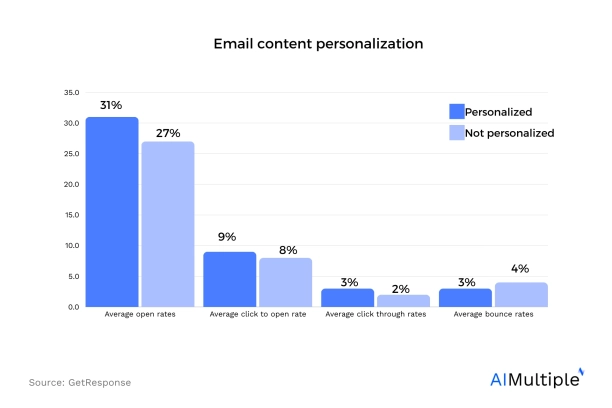
Figure 2: Email content personalization.12
Subject line personalization holds the highest rate in email message personalization as approximately 65% of marketers report that over half of their email marketing campaigns featured personalized subject lines.13
What are customers’ thoughts about personalization?
From customers’ point of view, customization is one of the most anticipated marketing strategies. In recent years, the value of the shopping experience and the demand for personalized service from companies have grown. By 2022, 73% of consumers expected companies to understand their unique shopping needs and expectations, with an increase from 66% in 2020.14
Over the same 2-year period, the number of consumers who looked forward to receiving personalized offers also increased from 52% to 56%. Additionally, this increase in personalization and a better user experience have led to fewer consumers feeling like they are just numbers to businesses.15
eCommerce email marketing metrics
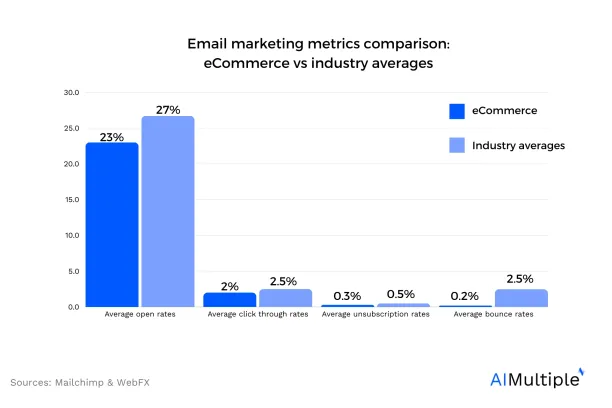
Figure 3: Email marketing metrics eCommerce vs industry averages comparison.16,17
Email marketing benchmarks provide insights into industry trends by offering data on average performance metrics across the sector. Key metrics of an email marketing campaign include open rates, click-through rates (CTR), unsubscribe rates, and bounce rates:
- Average open rates for eCommerce email marketing campaigns are 23%.18,19
- Average click through rates for eCommerce email marketing campaigns are 2%.20,21
- Average unsubscription rates for eCommerce email marketing campaigns are 0.3%.22,23
- Average bounce rates for eCommerce email marketing campaigns are 0.2%.24,25
Based on these statistics, it can be understood that users are less likely to unsubscribe from eCommerce marketing emails and these emails have a better chance to reach the destination inbox. On the other hand, eCommerce emails have less open and click through rates when compared to industry averages.
Types of different email marketing campaigns
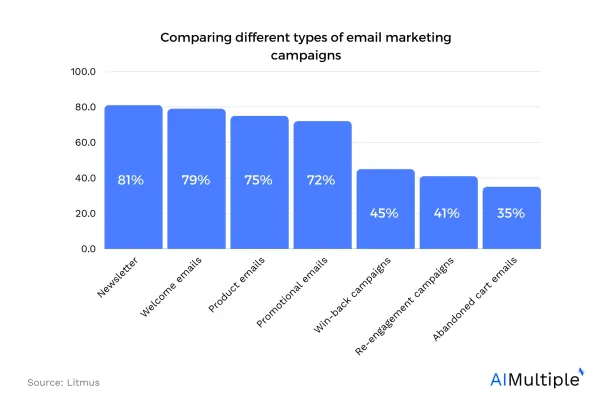
Figure 4: Different types of email marketing campaigns comparison.26
Newsletter and welcome emails are the two most effective and most used email marketing campaigns by marketers as welcome emails establish the foundation for the entire email marketing strategy, while newsletters help maintain and strengthen the subscriber relationship.27
Product and sales & promotional emails hold the second place in most popular strategies for email marketers.28
Re-engagement, win-back, and abandoned cart emails are also used for effective email marketing strategies.29
The future of email marketing for eCommerce businesses
The future of eCommerce email marketing looks dynamic and is driven by technological advancements and changing consumer expectations. Here are some key trends and predictions that are likely to shape the future of eCommerce email marketing:
Increased personalization and segmentation: Personalization continues to dominate as a key component of a successful email marketing strategy. By leveraging customer data to create personalized emails, especially in the subject lines, marketers can improve click through rates and email marketing ROI. This strategy not only enhances customer loyalty but also boosts customer retention, and crucial marketing metrics for any successful online business.
Integration of AI and machine learning: Artificial intelligence and machine learning will play a crucial role in automating and optimizing email marketing strategies. These technologies will help in predicting customer behavior, optimizing send times, and personalizing content at scale, thereby improving the effectiveness of each email sent.
Automation: Automated email marketing techniques are expected to be on the rise by simplifying processes such as sending welcome emails and post purchase follow-ups, which are vital in maintaining constant contact with customers. These email marketing efforts will be integral to crafting a comprehensive email marketing strategy that supports eCommerce stores in their goal to reach customers effectively.
Privacy-focused marketing: With increasing focus on data privacy, email marketing will need to adapt by prioritizing user consent and privacy. This will involve more transparent data practices and possibly a shift towards more value-driven content to encourage users to opt-in and stay subscribed.
Mobile friendly emails: Given the predominance of mobile devices such as smartphones for reading emails, a mobile responsive email design will become even more crucial. This means designing emails that are visually appealing and functional on smaller screens to fast loading times and easy navigation.
Measurement and analytics: The importance of measuring the effectiveness of email campaigns is expected to grow, with more sophisticated analytics tools available to track a wide array of metrics. This will help businesses understand the ROI of their email marketing efforts more accurately and make data-informed decisions.
Integration with other marketing channels: Better integration with social media, direct messaging apps, and other digital marketing channels is expected to create a cohesive customer journey.
Sustainability in email marketing: As global awareness of environmental issues increases, companies will also begin to promote their sustainability through their email marketing, not only in the content but also in how they manage their email lists to reduce digital waste.
Why is it important to understand eCommerce email marketing statistics?
44% of marketers consider email marketing a critical component of their overall marketing strategy,30 and understanding eCommerce email marketing trends is essential as these email marketing metrics may provide insights into customer behaviors, preferences, and engagement levels.
By analyzing these statistics, businesses can tailor their email marketing strategies more effectively through ensuring marketing messages resonate better with their target audience.
An effective email marketing strategy would lead to higher open and click-through rates, and increased conversion rates, ultimately boosting overall email marketing revenue.
Additionally, insights on email marketing performance can help eCommerce businesses to optimize their email marketing campaigns for mobile devices, personalize content, and improve timing and frequency of emails.
Further reading:
For more on email marketing:
- eCommerce Email Marketing in 2024: Guide & Top 5 Providers
- Email Marketing Benchmarks: Key Insights & Statistics in 2024
- 20 Email Marketing Case Studies in 2024
- Top 7 Applications of Generative AI for Email Marketing in 2024
- Top 10 Applications of AI in Email Marketing in 2024
- Top 10 AI Email Marketing Tools in 2024
- Email Marketing Pricing in 2024: Comparison of Top 15 Providers
- Top 8 Free Email Marketing Software in 2024
- Top 10 Email Marketing Platforms in ’24 Based on ~50k Reviews
- Top 10 Email Marketing Benefits in 2024
- Top 10 Email Marketing Best Practices in 2024
- Top 7 Email Marketing CRM Tools in ’24 Based on 30k Reviews
External Links
- 1. “Email marketing market size 2027“. Statista. Retrieved April 30, 2024
- 2. Freedman, Lauren (June 8, 2023). “Online retailers refine digital marketing strategies in 2023“. Digital Commerce 360. Retrieved April 30, 2024
- 3. Freedman, Lauren (June 8, 2023). “Online retailers refine digital marketing strategies in 2023“. Digital Commerce 360. Retrieved April 30, 2024
- 4. Freedman, Lauren (June 8, 2023). “Online retailers refine digital marketing strategies in 2023“. Digital Commerce 360. Retrieved April 30, 2024
- 5. “Email ROI by industry 2020“. Statista. Retrieved April 30, 2024
- 6. “Email ROI by industry 2020“. Statista. Retrieved April 30, 2024
- 7. “U.S. conversion rates before and after personalization 2021“. Statista. Retrieved April 30, 2024
- 8. “Top areas combining AI & marketing automation 2022“. Statista. Retrieved April 30, 2024
- 9. “Top areas combining AI & marketing automation 2022“. Statista. Retrieved April 30, 2024
- 10. “2021 State of Email Report” (PDF). Litmus. Retrieved April 30, 2024
- 11. “2023 Email Marketing Benchmarks by GetResponse“. GetResponse. Retrieved April 30, 2024
- 12. “2023 Email Marketing Benchmarks by GetResponse“. GetResponse. Retrieved April 30, 2024
- 13. “E-mail marketing personalization usage rates 2023“. Statista. Retrieved April 30, 2024
- 14. “Global: attitudes towards personalization 2022“. Statista. Retrieved April 30, 2024
- 15. “Global: attitudes towards personalization 2022“. Statista. Retrieved April 30, 2024
- 16. “Email Marketing Benchmarks: 2024 Industry Data“. WebFX. Retrieved April 30, 2024
- 17. “Email Marketing Benchmarks and Industry Statistics“. Mailchimp. Retrieved April 30, 2024
- 18. “Email Marketing Benchmarks: 2024 Industry Data“. WebFX. Retrieved April 30, 2024
- 19. “Email Marketing Benchmarks and Industry Statistics“. Mailchimp. Retrieved April 30, 2024
- 20. “Email Marketing Benchmarks: 2024 Industry Data“. WebFX. Retrieved April 30, 2024
- 21. “Email Marketing Benchmarks and Industry Statistics“. Mailchimp. Retrieved April 30, 2024
- 22. “Email Marketing Benchmarks: 2024 Industry Data“. WebFX. Retrieved April 30, 2024
- 23. “Email Marketing Benchmarks and Industry Statistics“. Mailchimp. Retrieved April 30, 2024
- 24. “Email Marketing Benchmarks: 2024 Industry Data“. WebFX. Retrieved April 30, 2024
- 25. “Email Marketing Benchmarks and Industry Statistics“. Mailchimp. Retrieved April 30, 2024
- 26. “2021 State of Email Report” (PDF). Litmus. Retrieved April 30, 2024
- 27. “2021 State of Email Report” (PDF). Litmus. Retrieved April 30, 2024
- 28. “2021 State of Email Report” (PDF). Litmus. Retrieved April 30, 2024
- 29. “2021 State of Email Report” (PDF). Litmus. Retrieved April 30, 2024
- 30. “Email Marketing: Success Tips & Strategies for CMOs“. Gartner. Retrieved April 30, 2024

Cem is the principal analyst at AIMultiple since 2017. AIMultiple informs hundreds of thousands of businesses (as per Similarweb) including 60% of Fortune 500 every month.
Cem's work has been cited by leading global publications including Business Insider, Forbes, Washington Post, global firms like Deloitte, HPE, NGOs like World Economic Forum and supranational organizations like European Commission. You can see more reputable companies and media that referenced AIMultiple.
Throughout his career, Cem served as a tech consultant, tech buyer and tech entrepreneur. He advised enterprises on their technology decisions at McKinsey & Company and Altman Solon for more than a decade. He also published a McKinsey report on digitalization.
He led technology strategy and procurement of a telco while reporting to the CEO. He has also led commercial growth of deep tech company Hypatos that reached a 7 digit annual recurring revenue and a 9 digit valuation from 0 within 2 years. Cem's work in Hypatos was covered by leading technology publications like TechCrunch and Business Insider.
Cem regularly speaks at international technology conferences. He graduated from Bogazici University as a computer engineer and holds an MBA from Columbia Business School.
Sources:
AIMultiple.com Traffic Analytics, Ranking & Audience, Similarweb.
Why Microsoft, IBM, and Google Are Ramping up Efforts on AI Ethics, Business Insider.
Microsoft invests $1 billion in OpenAI to pursue artificial intelligence that’s smarter than we are, Washington Post.
Data management barriers to AI success, Deloitte.
Empowering AI Leadership: AI C-Suite Toolkit, World Economic Forum.
Science, Research and Innovation Performance of the EU, European Commission.
Public-sector digitization: The trillion-dollar challenge, McKinsey & Company.
Hypatos gets $11.8M for a deep learning approach to document processing, TechCrunch.
We got an exclusive look at the pitch deck AI startup Hypatos used to raise $11 million, Business Insider.
To stay up-to-date on B2B tech & accelerate your enterprise:
Follow on
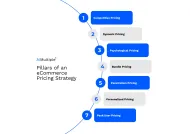
Comments
Your email address will not be published. All fields are required.